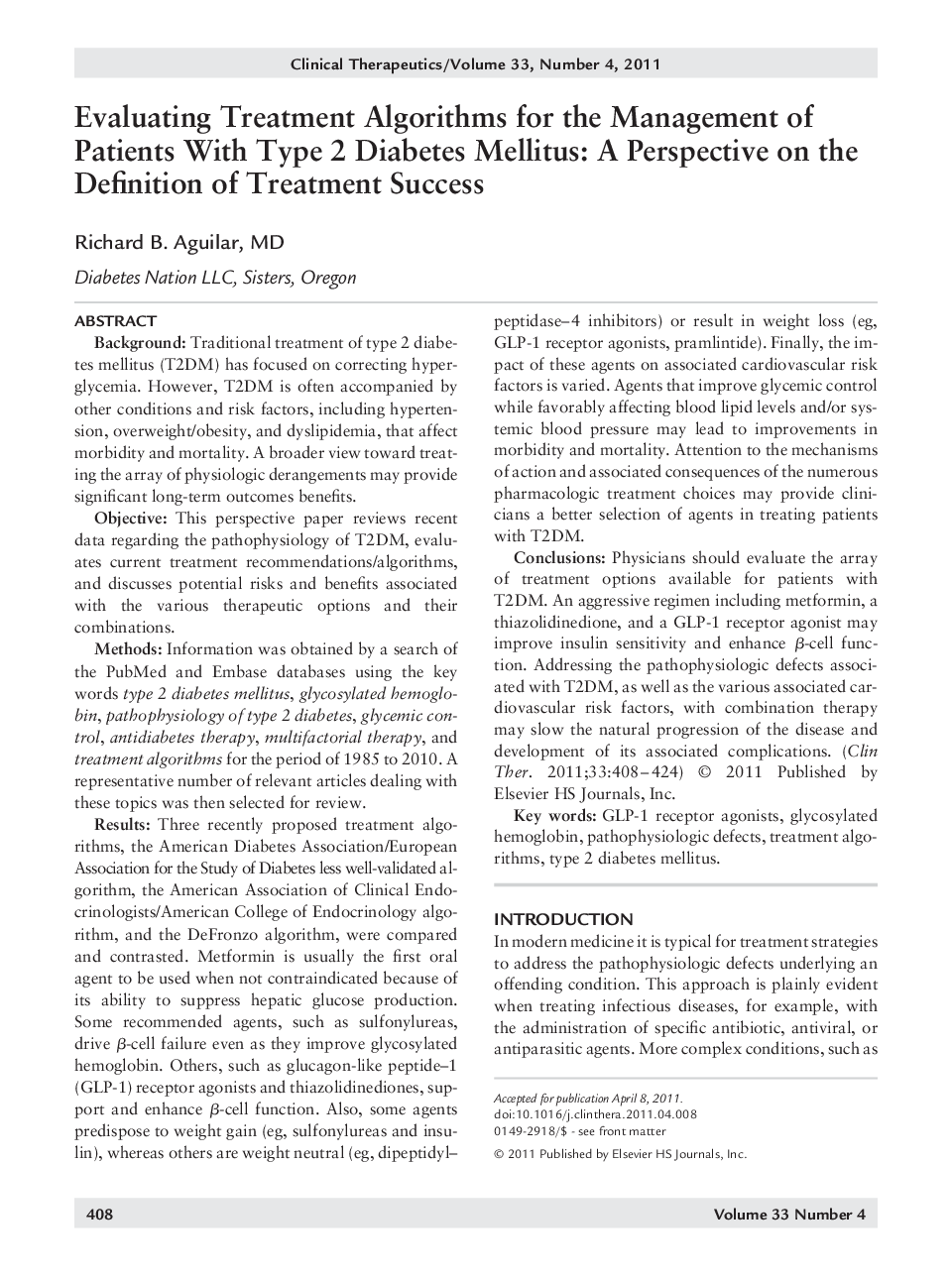| Article ID | Journal | Published Year | Pages | File Type |
|---|---|---|---|---|
| 2527629 | Clinical Therapeutics | 2011 | 17 Pages |
BackgroundTraditional treatment of type 2 diabetes mellitus (T2DM) has focused on correcting hyperglycemia. However, T2DM is often accompanied by other conditions and risk factors, including hypertension, overweight/obesity, and dyslipidemia, that affect morbidity and mortality. A broader view toward treating the array of physiologic derangements may provide significant long-term outcomes benefits.ObjectiveThis perspective paper reviews recent data regarding the pathophysiology of T2DM, evaluates current treatment recommendations/algorithms, and discusses potential risks and benefits associated with the various therapeutic options and their combinations.MethodsInformation was obtained by a search of the PubMed and Embase databases using the key words type 2 diabetes mellitus, glycosylated hemoglobin, pathophysiology of type 2 diabetes, glycemic control, antidiabetes therapy, multifactorial therapy, and treatment algorithms for the period of 1985 to 2010. A representative number of relevant articles dealing with these topics was then selected for review.ResultsThree recently proposed treatment algorithms, the American Diabetes Association/European Association for the Study of Diabetes less well-validated algorithm, the American Association of Clinical Endocrinologists/American College of Endocrinology algorithm, and the DeFronzo algorithm, were compared and contrasted. Metformin is usually the first oral agent to be used when not contraindicated because of its ability to suppress hepatic glucose production. Some recommended agents, such as sulfonylureas, drive β-cell failure even as they improve glycosylated hemoglobin. Others, such as glucagon-like peptide–1 (GLP-1) receptor agonists and thiazolidinediones, support and enhance β-cell function. Also, some agents predispose to weight gain (eg, sulfonylureas and insulin), whereas others are weight neutral (eg, dipeptidyl–peptidase–4 inhibitors) or result in weight loss (eg, GLP-1 receptor agonists, pramlintide). Finally, the impact of these agents on associated cardiovascular risk factors is varied. Agents that improve glycemic control while favorably affecting blood lipid levels and/or systemic blood pressure may lead to improvements in morbidity and mortality. Attention to the mechanisms of action and associated consequences of the numerous pharmacologic treatment choices may provide clinicians a better selection of agents in treating patients with T2DM.ConclusionsPhysicians should evaluate the array of treatment options available for patients with T2DM. An aggressive regimen including metformin, a thiazolidinedione, and a GLP-1 receptor agonist may improve insulin sensitivity and enhance β-cell function. Addressing the pathophysiologic defects associated with T2DM, as well as the various associated cardiovascular risk factors, with combination therapy may slow the natural progression of the disease and development of its associated complications.
